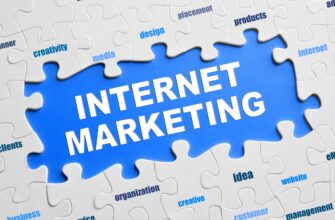- What is contextual advertising?
- What does contextual advertising look like?
- Objectives of contextual advertising
- How does contextual advertising work?
- Advantages and disadvantages of contextual advertising
- Pros:
- Minuses:
- Types of contextual advertising
- Text ads
- Banner (media)
- Video ads
- Main types of advertising campaigns
- What platforms do you run contextual advertising on?
Business owners are constantly working to increase sales and brand recognition. To do this, they are increasingly using the Internet (the number of its users is growing annually and future forecasts for their growth are very optimistic).
And for several years in a row, contextual advertising remains the most popular and effective tool for advertising on the Internet.
What is contextual advertising?
Contextual advertising is an Internet marketing tool that is based on displaying ads (text, media, video, product) to a user based on the context of their search query and the content of the page they are viewing.
How many calls and sales will I get by ordering contextual advertising from you?
I need to calculate the conversion of my website Describe
the task
in the application
Calculate potential ad revenue Google
contextual advertising calculator
The essence of contextual advertising is to deliver the business owner’s marketing message to the target audience that is maximally interested in his offer (based on their interests, search queries and previous behavior on the Internet).
In simple words – contextual advertising by definition is designed to effectively attract interested visitors to the target resource to ensure sales growth.
What does contextual advertising look like?
You have probably encountered such ads while surfing the Internet:
At the very top of a search engine (similar to organic search results, only with a small “advertisement” label):
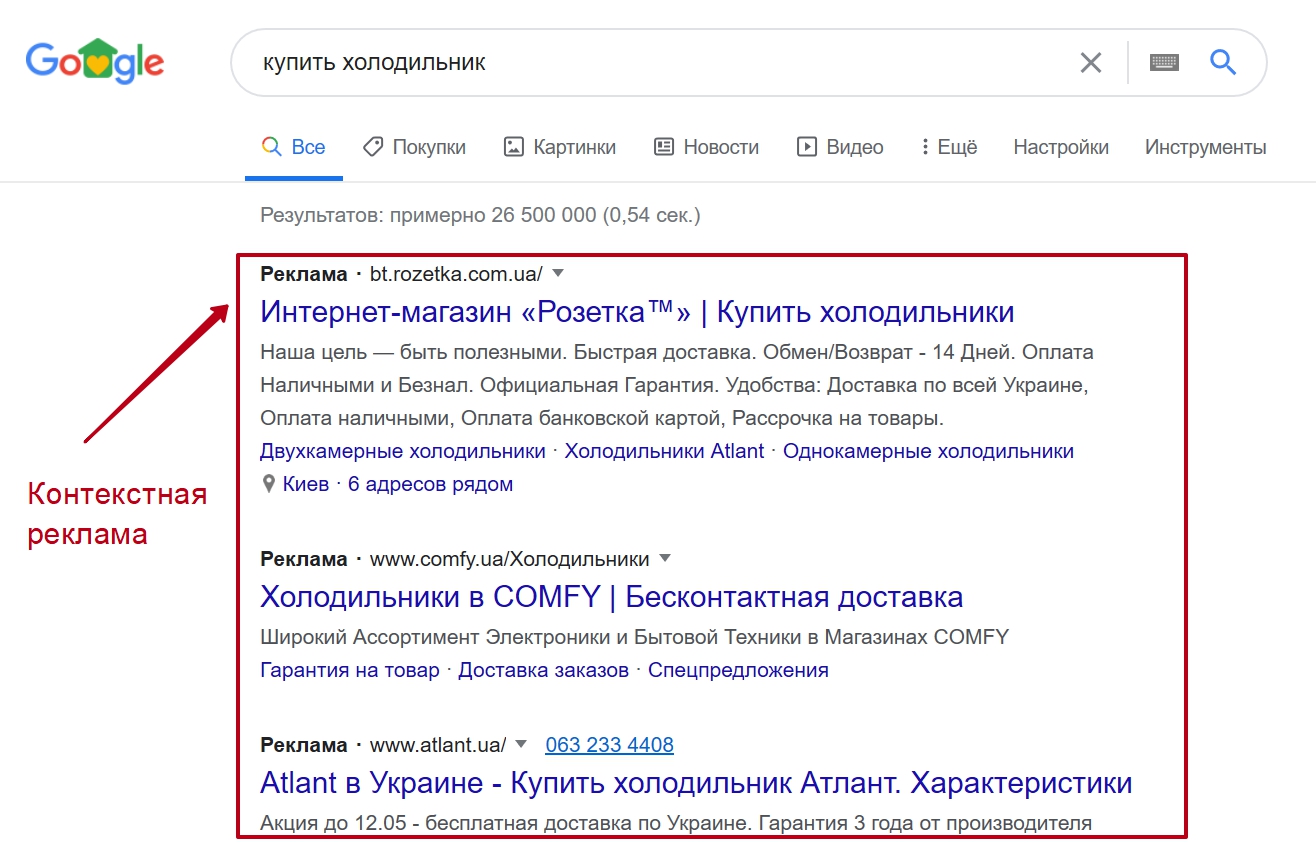
In front of a YouTube video or while watching it:

In the form of banners with picture and text on news and article sites:

During the search for any product in the form of a card with a price offer and a picture:
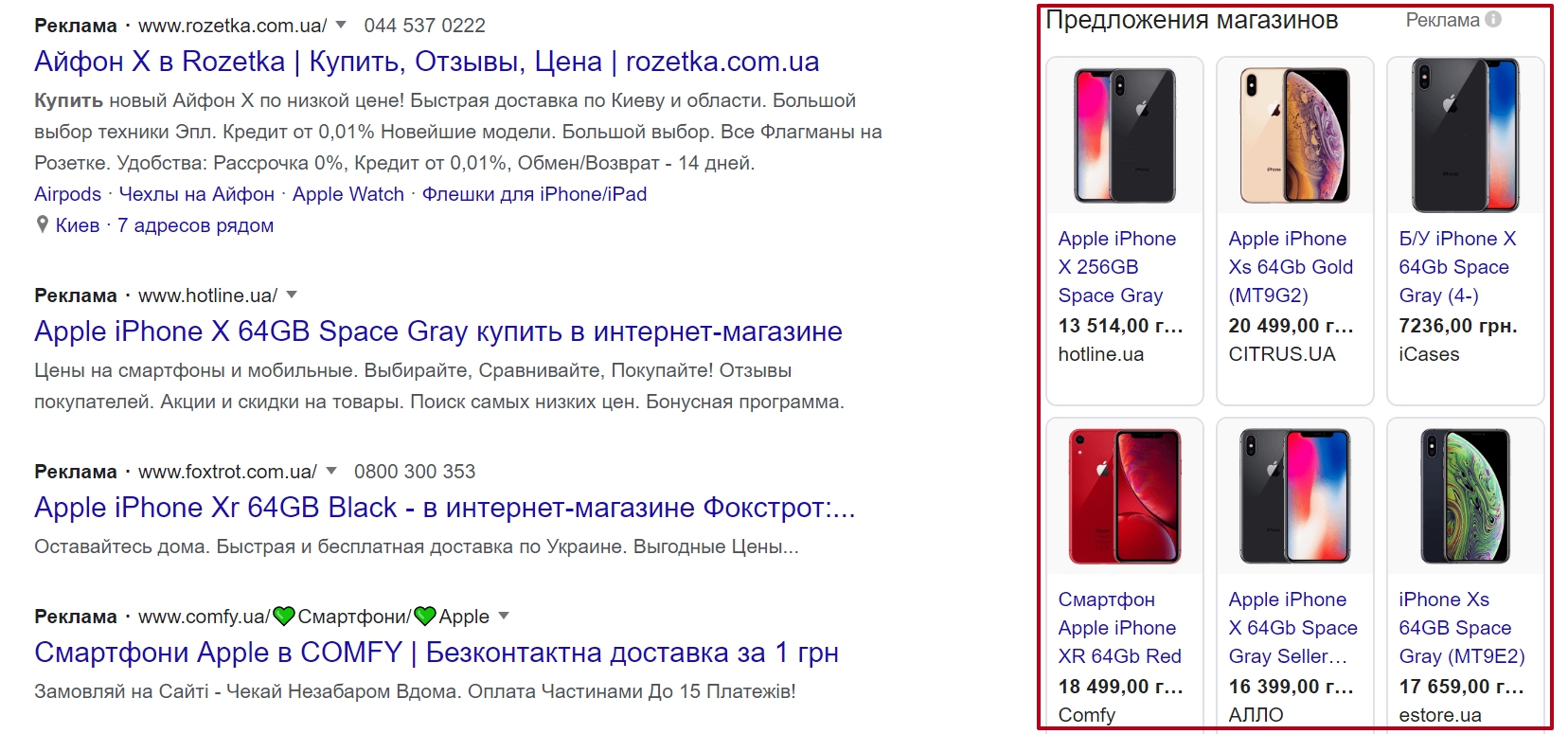
Objectives of contextual advertising
In general, the objectives of contextual advertising are similar to those of any other marketing campaign, but there are some peculiarities. Its main purpose:
- To quickly attract the target audience to the website. You can get the first visitors to your site within a few hours after creating an advertising campaign. This is especially important when you need to get wide coverage in a short period of time or test a new commercial offer.
- Increase brand awareness. Regular appearance of your company’s name in advertisements contributes to increased recognition among the target audience and the formation of a positive image in a particular subject.
- Remind those who have already used your services before. Using remarketing tools, you can show ads to those users who have previously made purchases or other targeted actions on the site. In this way you can stimulate repeat sales.
- Improve the performance of the site in the organic rendition. By attracting additional interested visitors to the site, contextual advertising improves behavioral factors, which positively affects the position in the search engine rendition.
- Increasing the number of sales for the desired goods or services. Of course, the main task of contextual advertising is to get as many conversions as possible on the site (purchases, subscriptions to the newsletter, applications or calls).
How does contextual advertising work?
The basic principle of how contextual advertising works is Pay Per Click (translated as pay per click). Earlier, another principle was common in the field of online advertising – payment per impressions (or CPV). However, now it is used much less often, and you pay only for actual clicks to the site.
The exact cost of a click depends on many factors, among them the level of competition in the topic, the position of the ad in the search engine (the top of the first page – the most expensive transitions, but from there they will be more). The position of the ad in the output is determined on the basis of the auction – who pays more, and is higher.
Advantages and disadvantages of contextual advertising

PPC has many pros compared to other types of advertising, for example, radio ads, TV ads, SEO promotion.
Pros:
- You can customize shows by specific regions. If your business operates only in a certain city, you don’t have to pay for users from other regions or countries. Moreover, you can set up advertising only for the desired area of the city.
- Quick effect. Advertising starts working immediately after launch. There is no need to wait several months, as in the case of SEO promotion. This is especially true for young sites that cannot yet compete in the organic rendition.
- You can track the results. You can see the exact statistics on transitions to the site (from which cities users came, by what keywords, how many, which of them ordered). For this purpose, we recommend setting up end-to-end analytics on the site. This is a great advantage over offline advertising, the exact result of which cannot be analyzed.
- You can control the message that the user will see. You can choose the images, videos, and text information you want to show in your ads, select the sites where they will be broadcast, and segment users by interest, gender, age, and other demographic characteristics.
- Ability to turn off ads at any time. If the company is temporarily out of business, moves to another address or managers cannot cope with a large influx of clients – you can temporarily disable the campaign without damage to it in the future and without spending money.
- Working on a warm audience. Advertising is seen exclusively by those users who plan to make a purchase or order a service. Moreover, they are already looking for where to purchase the selected product. Compared to other advertising tools, contextual advertising allows you to attract the most targeted customers.
- Payment for results. Working under the Pay Per Click scheme, the advertiser pays only for actual clicks on the ad. Everything is as open as possible – you can forecast traffic and calculate an approximate media plan for a future campaign before it even starts.
- Works with small budgets. Provided that you know how to customize advertising yourself, it is possible to run a campaign with very small budgets.
However, for all the advantages listed above, PPC is not without some disadvantages.
Minuses:
- Requires constant monitoring. The advertiser must keep a check on the rates per click, work with minus words, launch new product groups, change messages in ads. If this is not done – the effectiveness of contextual advertising can come to naught;
- May not pay off in highly competitive areas. If the cost per click in your topic is higher than average – it is better not to try to set up advertising yourself. This indicates that only pros with years of experience work here. To avoid wasting your budget – it is better to turn to an agency;
- User trust. Sites in the organic output cause many users greater loyalty, because if the resource is in the top of the organic to its promotion has made a lot of effort. Advertising can run anyone.
Types of contextual advertising
We can distinguish three main types of contextual advertising, each of which is aimed at different groups of users and topics. In some areas, it is most effective to combine all types of advertising to maximize results.
Text ads
Can be found in Google search results in the form of text ads with a title and the obligatory label “advertisement”. Displayed in response to a user’s search query above the organic results (up to 4 ads) and below them (up to 3 ads).
Ad impressions are tied to keywords that the advertiser assigns in the campaign settings. When a user enters the selected keywords into the search bar, he sees the advertiser’s ad.
How many calls and sales will I get by ordering contextual advertising from you?
I need to calculate the conversion of my website Describe
the task
in the application
Calculate potential ad revenue Google
contextual advertising calculator
Thus, the visitor receives a relevant answer to his query, and the advertiser – a potential client who can use his services, if he is satisfied with the price and conditions.
Banner (media)
Such advertising takes the form of a static or dynamic media banner with the addition of a text description and an active hyperlink to the advertiser’s website. Such advertising is demonstrated in the Google partner network, which accounts for at least 80% of global Internet traffic.
Media advertising is capable of generating search demand. If you enter the market with a new product – it makes no sense to advertise it in search, because the demand for it will be minimal. If you first launch a media campaign and tell users about your product, then later it will lead to an increase in the volume of search queries for this product.
The advantage of advertising in the contextual-media network is a wide possibility of targeting. You can select the audience based on geographical location, interests, age, purchasing power.
Video ads
It is a video clip that the user sees before or while watching a video on YouTube and partner sites. It is used to increase brand awareness. It can be used as a remarketing tool (if a user has already visited your site – you can remind him about yourself using video).
Video ads have the same broad targeting capabilities as media ads. You can also choose the audiences, sites, user interests, and video topics in which the ad will be shown.
Main types of advertising campaigns
There are four main types of contextual advertising, each of which helps to achieve different advertising goals for the advertiser.

Demonstrated in response to a user’s search query in a search engine or contextual media network. It is a text ad. In this way, you can directly address a potential customer by providing an answer to their search query.
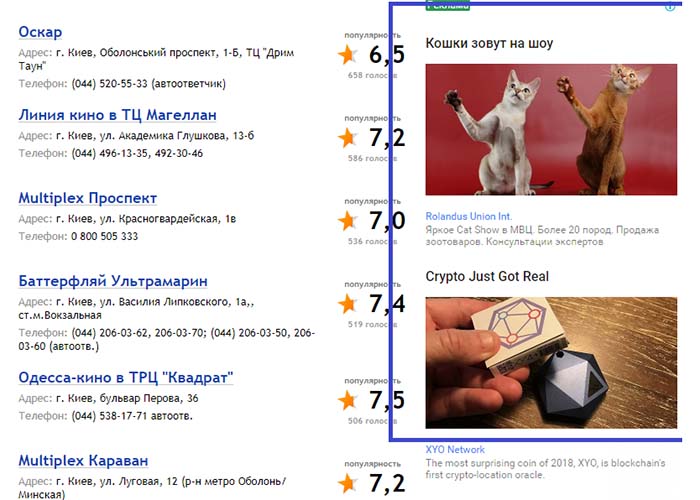
Displayed on millions of Google partner sites around the world. It is an animated banner ad with a link to the advertiser’s site. It has flexible options for customization, selection of sites for display and the cost per click is lower than in search.
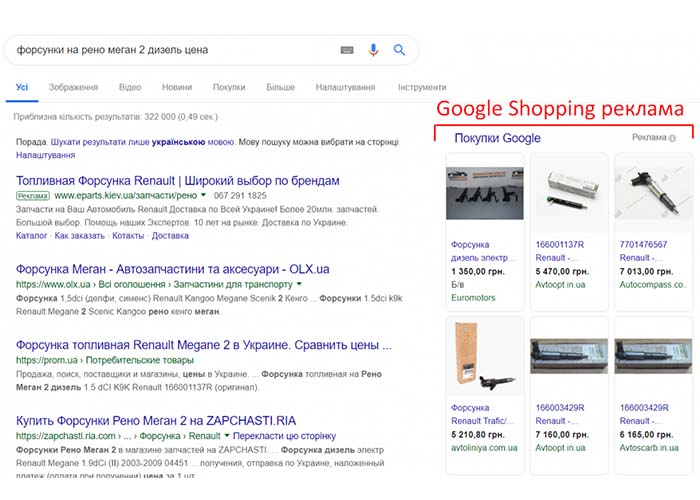
Displayed in the search engine, but not as a text ad, but as a product card with a photo, description, price and a link to the site. They have a higher conversion rate than ordinary text ads. Another advantage is that they can be shown simultaneously with text ads, which expands their reach.

The service allows you to show not only videos, but also text ads. Rollers are available with or without skip option and are designed to increase brand or company recognition. You can choose the sites for demonstration, target audience and interests.

Allows you to show contextual advertising to users who have already visited your site or performed some actions on it. This helps to bring back customers who have searched for something or added it to the cart, but did not make a purchase. At the same time, the cost of switching is very low, as ads are shown to already interested customers, and the conversion rate is higher.

These ad campaigns use machine learning capabilities to automatically optimize and allocate budget between the search network, YouTube, Discovery Ads and other channels. This makes it easy to customize and manage the campaign. The advertiser only needs to set goals for the number of conversions, reach or return on investment, and the system takes care of the rest.
What platforms do you run contextual advertising on?
The choice of a platform for contextual advertising depends on your target audience, budget and other factors. Among the leaders in this niche are such advertising networks:
- Google Ads (formerly Google AdWords) – the world’s largest platform for placing contextual advertising. It allows you to reach a huge audience: more than 3 billion users in Google search, 2 billion on YouTube and hundreds of millions on sites from the partner media network. It has the widest targeting and automation capabilities.
- Microsoft Ads (formerly Bing Ads) is the main competitor of the Google advertising network. It allows you to place ads in the search engines Bing and Yahoo. It is a great complement to Google ads, giving you the opportunity to reach an additional audience. And a nice bonus – the cost of clicks here is 20-40% lower, depending on the niche.
- Taboola is one of the largest contextual-media advertising networks. It allows you to place ads on more than 9,000 sites, including NBC, Bloomberg, The Independent. Media banners are shown to site visitors in the format of recommended articles at the bottom of the page. This network has an audience reach of approximately 1.4 billion unique users.
- Outbrain is a competitor of Taboola, which also allows you to place ads in recommended articles under the main text on the page. The Guardian, Fox News, CNN, Spiegel and others are among the system’s partners. The monthly reach is more than 545 million unique visitors according to the company.
- The concept of “contextual advertising” is quite multifaceted and includes not only the usual search ads, but also video ads, advertising-pursuit (remarketing), product ads and other varieties;
- Google search engine covers about 90% of users around the world and is the undisputed leader, a head ahead of its closest competitors. For comparison, the Yandex search engine, which is popular in the Runet, covers only 0.5% of global Internet traffic;
- Contextual advertising works best for medium and large businesses. In some cases, it works well for small businesses as well, but clicks are often too expensive for them;
- For highly competitive niches, we advise you not to set up advertising with your own hands, but to turn to a specialist (agency or freelancer), because only professionals work in such topics and the cost per click there is high, which means that you will have to spend a lot of money on tests.





